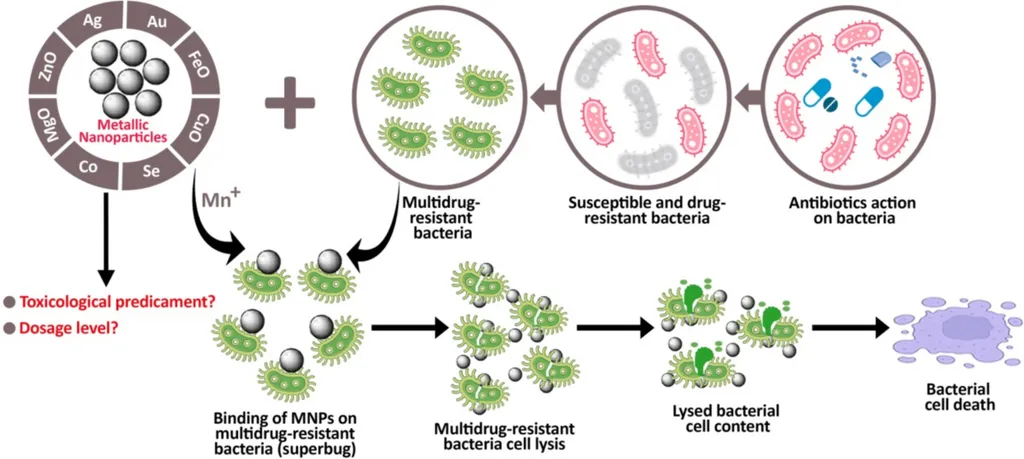In the relentless battle against antibiotic-resistant bacteria, researchers are turning to the nanoscale world for innovative solutions. A recent study published in the journal *Discover Nano* (translated to English as “Exploring Nano”) has shed light on the potential of cesium oxide nanoparticles as a new frontier in antibacterial agents. Led by Wedam Alghazzawi from the Department of Biochemistry at King Abdulaziz University, this research could have significant implications for various industries, including the energy sector, where bacterial growth can pose substantial challenges.
The study focuses on cesium oxide, a material that has not been extensively explored for its antibacterial properties. Alghazzawi and her team synthesized cesium oxide nanoparticles through a process called fast calcination, heating the material to 500°C for just three hours. This method not only ensures the synthesis of cesium oxide nanoparticles but also makes the process efficient and cost-effective.
To understand the antibacterial potential of these nanoparticles, the researchers employed two standard techniques: agar well diffusion and minimum inhibitory concentration assays. These methods allowed them to evaluate the effectiveness of cesium oxide nanoparticles against both gram-positive and gram-negative bacteria. The results were promising, indicating that cesium oxide nanoparticles could inhibit the growth of a wide range of bacteria.
“Our findings provide preliminary support for developing cesium oxide nanostructures as antibacterial agents,” Alghazzawi explained. “This could be a significant step forward in combating infections and diseases caused by bacteria, especially those that have become resistant to traditional antibiotics.”
The implications of this research extend beyond the medical field. In the energy sector, bacterial growth can lead to biofouling, a process where microorganisms accumulate on surfaces, causing corrosion and reducing the efficiency of equipment. For instance, in oil and gas pipelines, biofouling can lead to significant maintenance costs and downtime. The use of antibacterial nanoparticles like cesium oxide could potentially mitigate these issues, ensuring smoother operations and reducing costs.
Moreover, the energy sector often deals with harsh environments where traditional antibacterial agents may not be effective. The robustness of cesium oxide nanoparticles could make them an ideal candidate for such conditions. “The potential applications of cesium oxide nanoparticles are vast,” Alghazzawi noted. “From medical devices to industrial equipment, these nanoparticles could offer a new line of defense against bacterial growth.”
As the world grapples with the growing threat of antibiotic resistance, innovative solutions like cesium oxide nanoparticles offer a glimmer of hope. The research published in *Discover Nano* not only advances our understanding of nanotechnology but also paves the way for practical applications that could benefit various industries. With further research and development, cesium oxide nanoparticles could become a cornerstone in the fight against bacterial infections and biofouling, shaping the future of healthcare and industrial operations.

